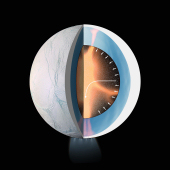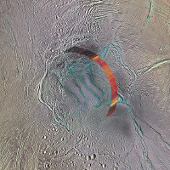ESA Science & Technology - News Archive
News Archive
News Archive
Using data from the international Cassini-Huygens mission to Saturn and Titan, scientists have found that there are two distinct types of craters on Saturn's largest moon Titan that are still being shaped by erosion.
Fifteen years ago today, ESA's Huygens probe made history when it descended to the surface of Saturn's moon Titan and became the first probe to successfully land on another world in the outer Solar System. However, during its descent, the probe began spinning the wrong way – and recent tests now reveal why.
Scientists analysing data from the Cassini mission have found evidence of light, soluble and reactive organic molecules in the ice grains ejected by Saturn's icy moon Enceladus, providing another important piece of evidence to investigate its potential habitability.




















